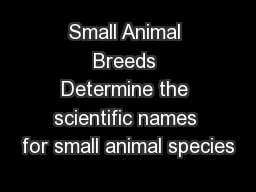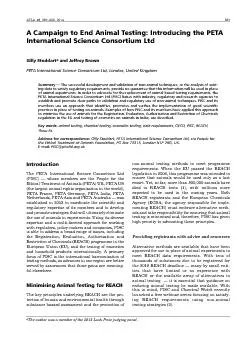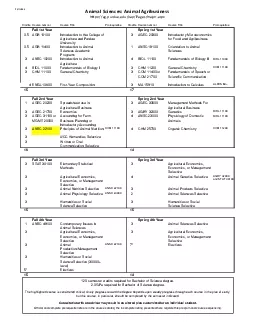PPT-Animal Testing
Author : calandra-battersby | Published Date : 2016-02-22
By Juliann Cummings A nimal testing is abuse to many different kinds of innocent animals and should not be used this type of cruelty should be stopped immediately
Presentation Embed Code
Download Presentation
Download Presentation The PPT/PDF document "Animal Testing" is the property of its rightful owner. Permission is granted to download and print the materials on this website for personal, non-commercial use only, and to display it on your personal computer provided you do not modify the materials and that you retain all copyright notices contained in the materials. By downloading content from our website, you accept the terms of this agreement.
Animal Testing: Transcript
Download Rules Of Document
"Animal Testing"The content belongs to its owner. You may download and print it for personal use, without modification, and keep all copyright notices. By downloading, you agree to these terms.
Related Documents














![[FREE]-Unit Testing Principles, Practices, and Patterns: Effective testing styles, patterns,](https://thumbs.docslides.com/980180/free-unit-testing-principles-practices-and-patterns-effective-testing-styles-patterns-and-reliable-automation-for-unit-testing-mocking-and-integration-testing-with-examples-in-c.jpg)